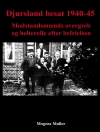Tracking the Jews analyses the beliefs, ideas, concepts, arguments and policies of an unprecedented conversionary initiative during the years immediately before, during and after the Holocaust.
From the rubbles of World War I to the ashes of World War II, it reconstructs previously unknown relations between a Protestant framework for global evangelisation of Jews, the network of international bodies that constituted the ecumenical movement of the early twentieth century, and the streams of thought on the Jewish question that flowed through its networking channels.
Based on more than twenty thousand pages of archival documents, it forces from the shadows the conversionary issues in which nineteen centuries of negative Church teachings on Jews were rooted, bringing to light a field of transnationally shared beliefs about the place, role and destiny of Jews in world society. It sets into sobering relief the paradoxical ways in which a broad international toleration of traditional anti-Judaism allowed, under a banner of Christian benevolence, a transnational public discourse of antisemitic ideas masked in conversionary language.
表中的内容
Introduction
1 Conversion and the Jewish Problem: 1925–1932
2 In the shadows of response: 1933–1936
3 Antisemitism, refugees and war: 1937–1939
4 Voices and silences in war: 1940–1944
5 More than one guilt in the embers: 1945–1948
6 The Jews as a problem
Index
关于作者
Carolyn Sanzenbacher is an Honorary Fellow at the University of Southampton’s Parkes Institute for the Study of Jewish/Non-Jewish Relations












